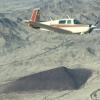OMG, LOP and GAMIs again...
How do you run your turbo engine during cruise?
22 members have voted
-
Members Online
- MDMooney
- Yetti
- jeremyc209
- M20S Driver
- Fritz1
- 1964-M20E
- varlajo
- affricate
- boboxa9895
- hammdo
- skydvrboy
- DRH4249
- RangerM20
- patrickf
- wolfbyte
- Cptcloud
- Vance Harral
- Mark89114
- 00-Negative
- TCC
- Schllc
- Patrick Horan
- Flyler
- Tom F
- Steve Dawson
- Daily
- Hank
- MikeOH
- Vulcan81
- 201er
- TangoTango
- PhateX1337
- 1980Mooney
- Pinecone
- Mike A
- pirate
- Scott Ashton
- dkkim73
- 802flyer
- MarkD34M
- mluvara
- pkellercfii
- blackdogair


Recommended Posts
Join the conversation
You can post now and register later. If you have an account, sign in now to post with your account.